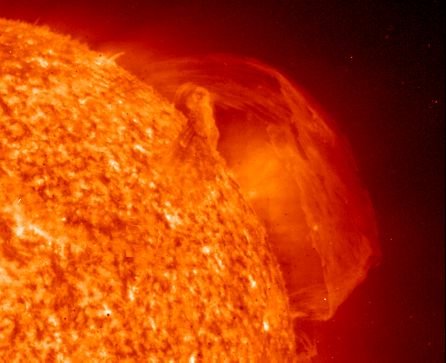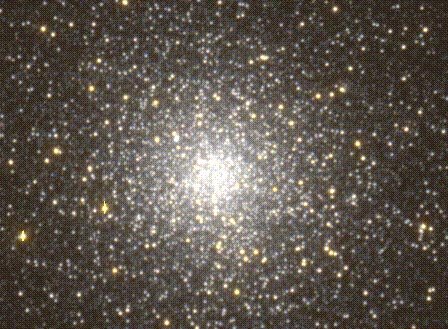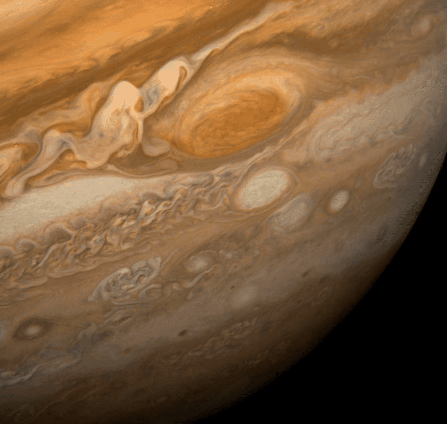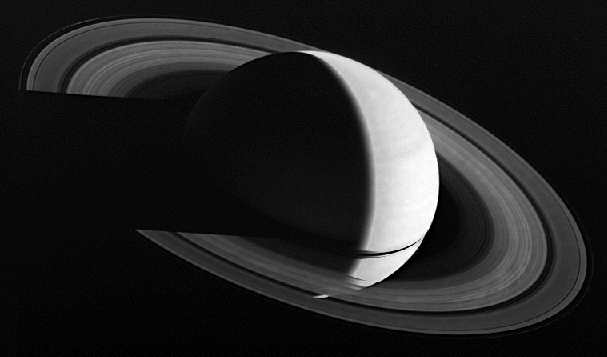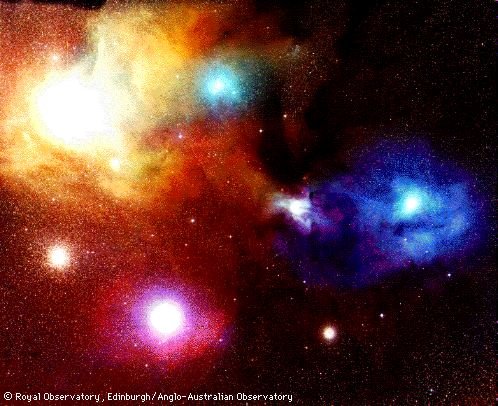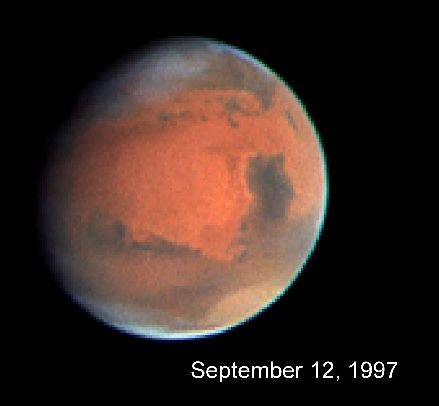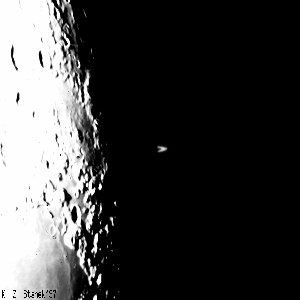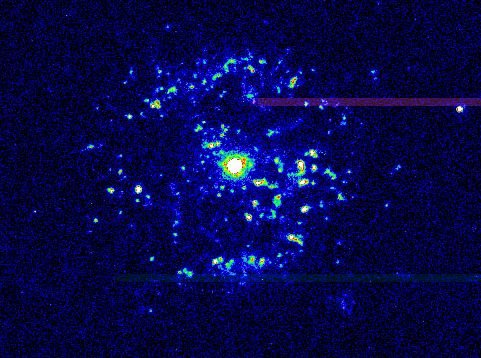NASA APOD #822-829
#822 Erupting Sun September 18, 1997
“On August 27th twisting magnetic fields propelled this huge eruptive prominence a hundred thousand miles above the Sun's surface. The seething plasma of ionized gases is at a temperature of about 150,000 degrees Farenheit and spans over 200,000 miles (about 27 Earths). The Extreme ultraviolet Imaging Telescope (EIT) onboard the space-based SOHO observatory recorded this exquisitely detailed image in the light of ionized Helium atoms from its vantage point in a Halo orbit. This is the largest solar prominence observed by SOHO instruments since they began exploring solar phenomena in early 1996."
Copyright: Public domain
#823 Globular Cluster 47 Tucanae September 19, 1997
“Stars come in bunches. Of the over 200 globular star clusters that orbit the center of our Milky Way Galaxy, 47 Tucanae is the second brightest globular cluster (behind Omega Centauri). Known to some affectionately as 47 Tuc or NGC 104, it is only visible from the Southern Hemisphere. Light takes about 20,000 years to reach us from 47 Tuc which can be seen near the SMC in the constellation of Tucana. Red Giant stars are particularly easy to see in the above photograph. The dynamics of stars near the center of 47 Tuc are not well understood, particularly why there are so few binary systems there."
Copyright: Public domain
#824 The Clouds of Jupiter September 20, 1997
“What makes the colors in Jupiter's clouds? With a mean temperature of 120 degrees Kelvin (-153 degrees Celsius) and a composition dominated by hydrogen (about 90%), and helium (about 10%) with a smattering of hydrogen compounds like methane and ammonia, the blue, orange, and brown cloud bands and the salmon colored "red" spot are hard to explain. Trouble is -- at the cool cloud temperatures Jupiter's atmospheric constituents should be colorless! Some suggest that more colorful hydrogen compounds well up from warmer regions in the atmosphere, tinting the cloud tops. Alternatively, compounds of trace elements like sulfur may color the clouds. Jupiter's colors do indicate the clouds' altitudes, blue is lowest through red as highest. The dark colored bands are called belts and the light colored ones zones. In addition to the belts and zones, the Voyager missions revealed the presence of intricate vortices visible, for example, in this 1979 image from the Voyager I flyby. Centuries of visual observations of Jupiter have revealed that the colors of its clouds are ever changing."
Copyright: Public domain
#825 Looking Down on Saturn September 21, 1997
“This picture of Saturn could not have been taken from Earth. No Earth based picture could possibly view the night side of Saturn and the corresponding shadow cast across Saturn's rings. Since Earth is much closer to the Sun than Saturn, only the day side of the planet is visible from the Earth. In fact, this photo was taken by the Voyager 1 spacecraft as it flew by Saturn in November 1980. The next spacecraft to approach Saturn will be Cassini which is currently scheduled to be launched later this year and reach Saturn in 2004."
Copyright: Public domain
#826 Antares and Rho Ophiuchi September 22, 1997
“Why is the sky near Antares and Rho Ophiuchi so colorful? The colors result from a mixture of objects and processes. Fine dust illuminated from the front by starlight produces blue reflection nebulae. Gaseous clouds whose atoms are excited by ultraviolet starlight produce reddish emission nebulae. Backlit dust clouds block starlight and so appear dark. Antares, a red supergiant and one of the brighter stars in the night sky, lights up the yellow-red clouds on the upper left. Rho Ophiuchi lies at the center of the blue nebula on the right. The distant globular cluster M4 is visible just below Antares, and to the left of the red cloud engulfing Sigma Scorpii. These star clouds are even more colorful than humans can see, emitting light across the electromagnetic spectrum."
Copyright: AAOAATBROEUKS Telescope
#827 A Martian Autumn Begins September 23, 1997
“Today is the first day of Autumn in the Northern Hemisphere of Planet Earth. The Autumnal Equinox occured yesterday at 7:56 pm EDT as the Sun crossed the celestial equator from North to South. Mars has seasons too and for the same reason that Earth does -- like Earth, Mars' axis of rotation is tilted with respect to the plane of its orbit around the sun. Eleven days ago Autumn also came to Mars' Northern Hemisphere and the Hubble Space Telescope recorded this image of the red planet to look for seasonal changes in the Martian weather. Clouds appear to cover the north polar regions while a dust storm rages in the south. The subject of weather on Mars is important to the just arrived Mars Global Surveyor spacecraft as it uses the innovative technique of aerobraking to establish a suitable mapping orbit around Mars."
Copyright: Public domain
#828 Moon Occults Saturn September 24, 1997
“Many stargazers in the U. S. were able to watch a lovely lunar occultation early last Thursday morning as a bright Moon passed in front of Saturn. Using a 1.2 meter reflector, astronomer Kris Stanek had an excellent view of this dream-like event from the Whipple Observatory atop Arizona's Mount Hopkins. This animated gif image was constructed by Wes Colley from 4 frames taken by Stanek at 35 second intervals as the ringed planet emerged from behind the Moon's dark limb. While lunar occultations of fairly bright stars and planets are not extremely rare events, their exact timing depends critically on the observer's location."
Copyright: K. StanekCfAW. ColleyPrinceton
#829 T Pyxidis: Recurrent Nova September 25, 1997
“What happens when a thermonuclear blast occurs on the surface of a white dwarf star? Over the years astronomers have watched (at a safe distance ...) as, 6,000 light years from Earth in the southern constellation Pyxis, a binary star known as T Pyxidis repeatedly produces these fearsome explosions. This Hubble Space Telescope image of nova T Pyx captures what appear to be blobs rather than the expected shells of material expanding from this interacting star system. Like other binary star systems which produce nova outbursts, T Pyx is composed of a dense white dwarf and a close companion star. An outburst occurs when the temperature and density of the sea of matter dumped from the companion onto the surface of the white dwarf reach the nuclear flash point for hydrogen. While material is violently blown off, the white dwarf itself is not disrupted and soon begins to accumulate more matter from its companion, repeating the cataclysm a few years later."
Copyright: Public domain
Upvote! Resteem! Comment! As you like it! Thank you for attention!
